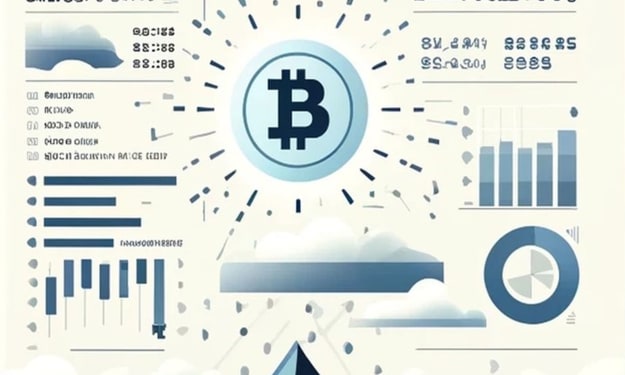Liquid Restaking Tokens (LRTs): A Game-Changer for DeFi Enthusiasts
This innovative concept addresses a common challenge faced by staking participants, allowing them to unlock liquidity without sacrificing their staking rewards.

Liquid Restaking Tokens (LRTs) have been making waves in the world of decentralized finance (DeFi), offering users a unique opportunity to combine the benefits of staking rewards with the flexibility of liquidity. But what exactly are LRTs? In simple terms, LRTs represent a form of tokenized staking, where users can stake their cryptocurrency assets to earn staking rewards while simultaneously holding liquid tokens that can be freely traded or transferred on decentralized exchanges (DEXs) or other trading platforms. This innovative concept addresses a common challenge faced by staking participants, allowing them to unlock liquidity without sacrificing their staking rewards.
Exploring the Benefits of LRTs in DeFi
The benefits of Liquid Restaking Tokens extend far beyond just earning passive income. By tokenizing staked assets into LRTs, users can enjoy enhanced liquidity, providing them with the freedom to access their funds at any time without waiting for staking lock-up periods to expire. This flexibility opens up a world of opportunities for traders and investors, enabling them to capitalize on market movements and take advantage of trading opportunities without being restricted by staking commitments. Additionally, LRTs contribute to the efficiency and liquidity of staking markets, increasing the fungibility and tradability of staked assets and fostering price discovery and improved market dynamics. As the DeFi landscape continues to evolve, Liquid Restaking Tokens are poised to play a significant role in shaping the future of decentralized finance, offering users a powerful tool to optimize their financial strategies and unlock new opportunities for value creation.
The Mechanics Behind Liquid Restaking Tokens
How Liquid Restaking Tokens Work?
To understand how Liquid Restaking Tokens (LRTs) work, let's break it down step by step. The process typically begins with users staking a certain amount of cryptocurrency, such as Ethereum, Cosmos, or Polkadot, into a staking pool or smart contract. This staked cryptocurrency is then tokenized into LRTs, which represent the user's stake in the staking pool. These LRTs entitle the user to a proportionate share of the staking rewards generated by the pool. Importantly, users retain ownership of their staked assets while holding LRTs, allowing them to freely trade, transfer, or sell their tokens on secondary markets without affecting their staking position or rewards accrual.
The Process of Minting LRTs Explained
Minting LRTs involves a series of steps designed to tokenize staked assets and ensure the seamless functioning of the Liquid Restaking Tokens ecosystem. Firstly, users stake their cryptocurrency assets into a designated staking pool or smart contract, initiating the minting process. Once staked, the smart contract issues an equivalent amount of LRTs to the user, representing their stake in the pool. These LRTs are backed by the staked assets and entitle the user to a share of the staking rewards. Throughout the minting process, users have full control over their staked assets and can manage their LRTs as they see fit, whether it's trading them on secondary markets, transferring them to other wallets, or holding them for future use. This seamless integration of staking and liquidity is what sets Liquid Restaking Tokens apart, offering users a flexible and efficient way to participate in staking ecosystems while unlocking liquidity for other DeFi activities.
Maximizing Returns with Liquid Restaking Tokens
Liquid Restaking Tokens (LRTs) have been heralded as a game-changer in the world of decentralized finance (DeFi), offering users the opportunity to maximize returns while navigating the dynamic crypto landscape. One of the key advantages of LRTs lies in their ability to enhance liquidity, providing users with increased flexibility and accessibility to their funds. By tokenizing staked assets into LRTs, users can unlock liquidity without sacrificing their staking rewards, enabling them to capitalize on trading opportunities, rebalance their portfolios, or participate in other DeFi activities without being tied down by staking lock-up periods.
Enhancing Liquidity: The Key Advantage of LRTs
LRTs revolutionize the traditional staking model by offering users a seamless integration of liquidity and staking rewards. Unlike conventional staking mechanisms that require users to lock up their funds for a predetermined period, LRTs empower users to maintain control over their assets while still earning staking rewards. This enhanced liquidity opens up a world of possibilities for users, allowing them to access their funds whenever they need them, whether it's for trading, investing, or taking advantage of other DeFi opportunities. In a rapidly evolving crypto market, liquidity is king, and LRTs offer users a valuable tool to navigate the ups and downs of the market with ease.
Financial Flexibility: Earning Rewards Without Sacrificing Accessibility
One of the most compelling features of LRTs is their ability to provide users with financial flexibility without compromising on rewards. With LRTs, users can earn staking rewards while still retaining the option to access their funds at any time. This flexibility is particularly valuable in a market where timing is everything, allowing users to seize opportunities as they arise without being hindered by staking lock-up periods. Whether it's taking advantage of a bullish market trend or rebalancing their portfolio in response to changing market conditions, LRTs empower users to make informed decisions and optimize their investment strategies for maximum returns.
Diversifying Investment Strategies with LRTs
Liquid Restaking Tokens (LRTs) offer investors a powerful tool to diversify their investment strategies and mitigate risk in the volatile crypto market. By tokenizing staked assets into LRTs, users can allocate their funds across different staking pools or platforms, spreading their risk and optimizing their risk-adjusted returns. This diversification allows users to hedge against specific market risks and capitalize on a wider range of opportunities, ensuring that their investment portfolio remains resilient in the face of market fluctuations. Additionally, LRTs enable users to explore new avenues for value creation within the DeFi ecosystem, providing access to innovative financial instruments and opportunities for yield generation.
Optimizing Capital Utilization: Leveraging Liquidity for DeFi Activities
In addition to diversifying investment strategies, Liquid Restaking Tokens (LRTs) enable users to optimize their capital utilization by leveraging liquidity for other DeFi activities. With LRTs, users can earn staking rewards on their assets while simultaneously leveraging their liquidity to participate in activities such as lending, borrowing, or yield farming. This dual approach to capital utilization allows users to maximize their returns and unlock new sources of income within the DeFi ecosystem. By seamlessly integrating staking and liquidity provision, LRTs offer users a flexible and efficient way to engage with DeFi, empowering them to make the most of their assets in a rapidly evolving market landscape.
Incentivizing Participation: The Lure of Liquid Restaking Tokens
Liquid Restaking Tokens (LRTs) have captured the attention of DeFi enthusiasts worldwide, offering a compelling incentive structure that attracts users to participate in staking ecosystems. But what exactly makes LRTs so enticing, and how do they incentivize participation?
Attracting Users: The Incentives of LRTs
The allure of LRTs lies in their ability to provide users with both liquidity and staking rewards, creating a win-win scenario for participants. By tokenizing staked assets into LRTs, users can unlock liquidity while still earning staking rewards, giving them the best of both worlds. This dual incentive structure not only encourages users to stake their assets but also motivates them to hold onto their LRTs, driving demand and liquidity within the ecosystem.
Furthermore, LRTs offer users a user-friendly interface and lower barriers to entry, making staking more accessible to a wider audience. Unlike traditional staking mechanisms that require technical expertise and large capital commitments, LRTs provide a seamless and intuitive way for users to participate in staking activities, regardless of their level of experience. This democratization of staking opportunities empowers more users to get involved in DeFi and contribute to the security and decentralization of blockchain networks.
Democratizing Staking: Lowering Barriers to Entry with LRTs
Liquid Restaking Tokens (LRTs) play a crucial role in democratizing staking by lowering barriers to entry and making staking opportunities accessible to a wider range of investors. Whether you're a seasoned investor or a newcomer to the world of DeFi, LRTs offer a user-friendly interface and intuitive experience that makes staking more accessible than ever before. With LRTs, you don't need technical expertise or large capital commitments to participate in staking activities. Instead, you can simply stake your assets and start earning rewards with ease.
How to Launch a Liquid Restaking Protocol?
Launching a liquid restaking protocol (LRT) requires careful planning and execution to ensure its success in the competitive landscape of decentralized finance (DeFi). Here's a comprehensive guide to help you navigate the process and bring your LRT system to life.
Steps to Implement a Liquid Restaking Protocol
Define Your Objectives: Before diving into the technical aspects, it's essential to clearly define your objectives for the LRT system. Determine what you aim to achieve, whether it's enhancing liquidity, attracting users, or optimizing capital efficiency.
Select the Right Blockchain: Choose a blockchain platform that aligns with your project requirements and objectives. Consider factors such as scalability, security, and community support when selecting the blockchain for your LRT system.
Design the Protocol Architecture: Develop a robust architecture for your LRT protocol, outlining the components, functionalities, and interactions within the system. Define the roles of stakeholders, including users, validators, and liquidity providers, to ensure smooth operation.
Implement Smart Contracts: Smart contracts form the backbone of any LRT system, governing staking, tokenization, and rewards distribution. Write and deploy smart contracts to automate key processes and ensure transparency and security within the protocol.
Integrate with Decentralized Exchanges (DEXs): To facilitate the trading of liquid restaking tokens (LRTs), integrate your protocol with decentralized exchanges (DEXs) or liquidity pools. Ensure seamless interoperability to enable users to trade LRTs efficiently.
Test and Audit the Protocol: Thoroughly test your LRT protocol in a controlled environment to identify and address any bugs or vulnerabilities. Engage third-party auditors to conduct security audits and ensure the integrity and reliability of the protocol.
Launch and Iterate: Once testing and auditing are complete, launch your LRT protocol and monitor its performance closely. Gather feedback from users and stakeholders to identify areas for improvement and iterate on the protocol to enhance its functionality and user experience.
Best Practices for Launching Your Own LRT System
Community Engagement: Build a strong community around your LRT system by engaging with users, developers, and stakeholders through social media, forums, and community events. Foster open communication and gather feedback to drive innovation and adoption.
Security First: Prioritize security at every stage of the development and deployment process. Implement robust security measures, such as multi-signature wallets, code audits, and bug bounty programs, to safeguard user funds and maintain trust in the protocol.
Transparency and Governance: Maintain transparency in the operation of your LRT system by providing clear documentation, regular updates, and open governance processes. Empower users to participate in decision-making through governance mechanisms such as voting and proposal submission.
Scalability and Interoperability: Design your LRT protocol with scalability and interoperability in mind to accommodate future growth and ensure compatibility with other blockchain platforms and DeFi protocols. Adopt standards and protocols that promote interoperability and seamless integration with existing infrastructure.
Conclusion
In conclusion, launching a liquid restaking protocol (LRT) presents a unique opportunity to innovate in the decentralized finance (DeFi) space and drive growth and adoption in the ecosystem. By following best practices and leveraging the power of blockchain technology, you can create a robust and scalable LRT system that unlocks liquidity, optimizes capital efficiency, and empowers users to participate in staking ecosystems. Embrace the potential of liquid restaking tokens and join the movement towards a more inclusive and decentralized future of finance.






Comments
There are no comments for this story
Be the first to respond and start the conversation.